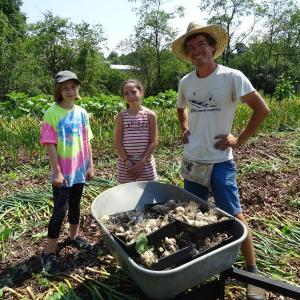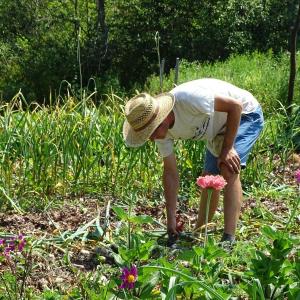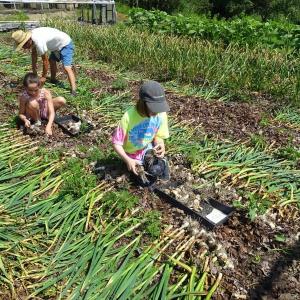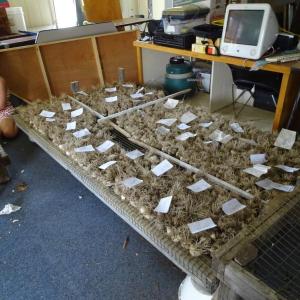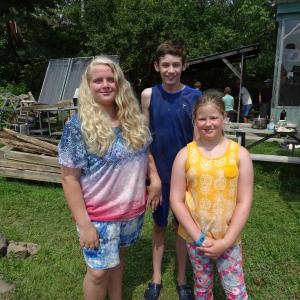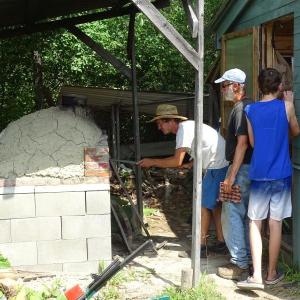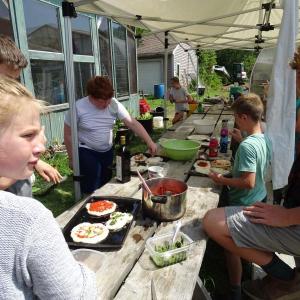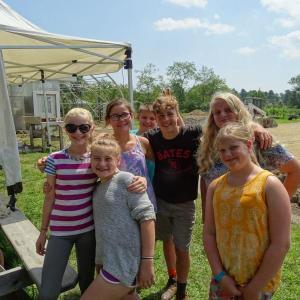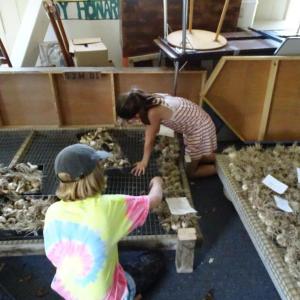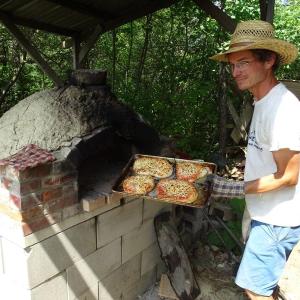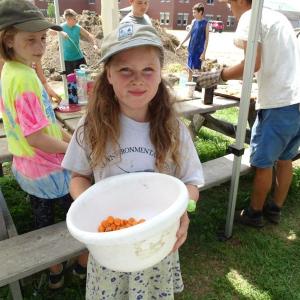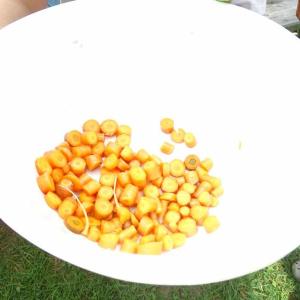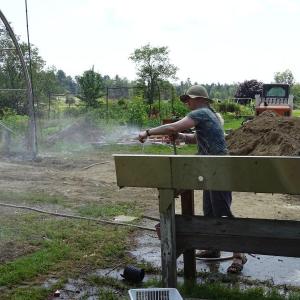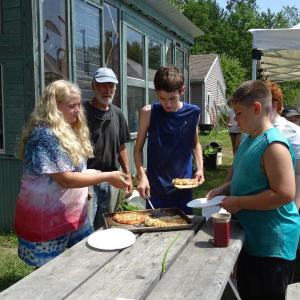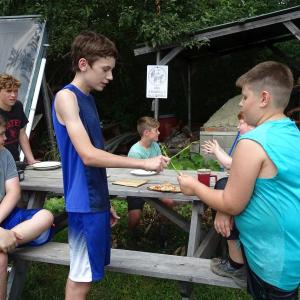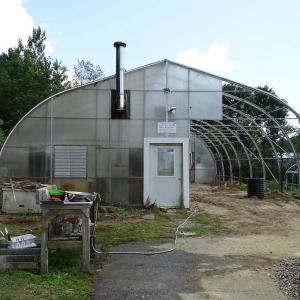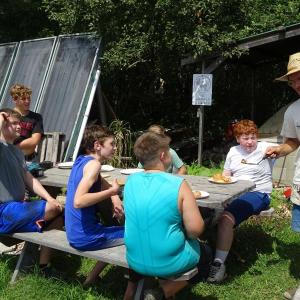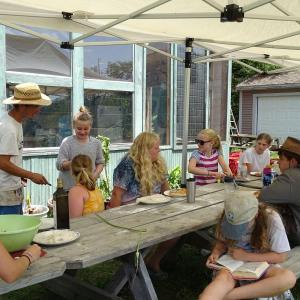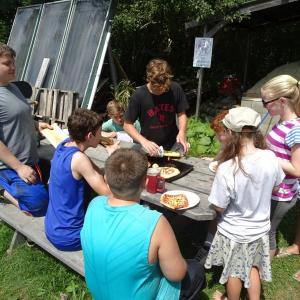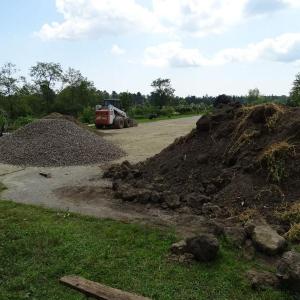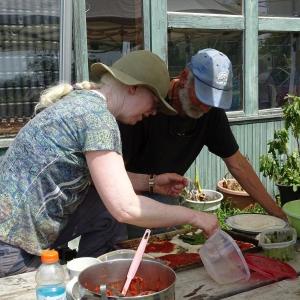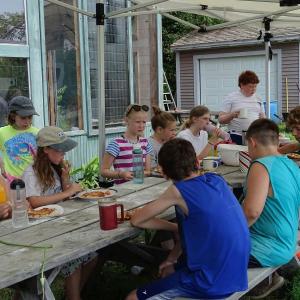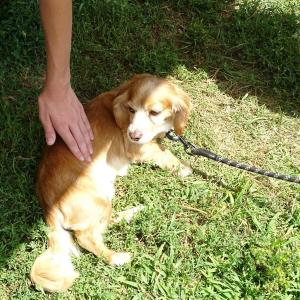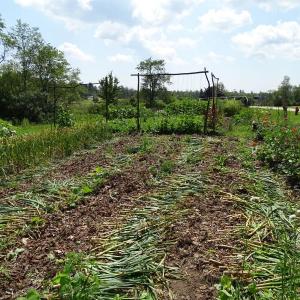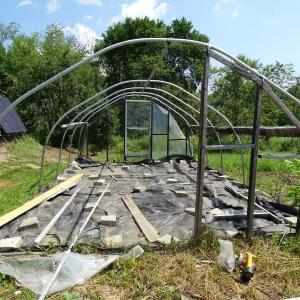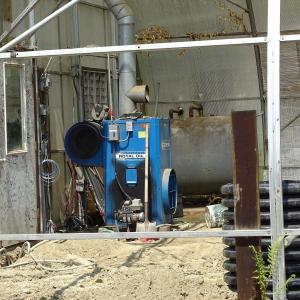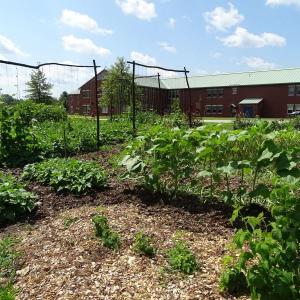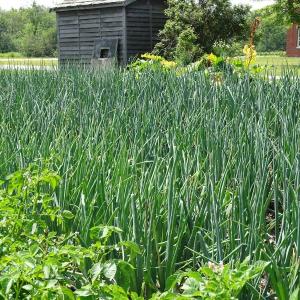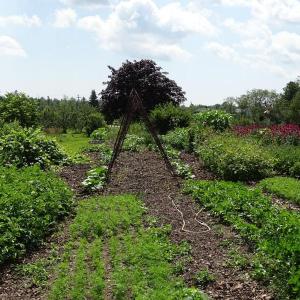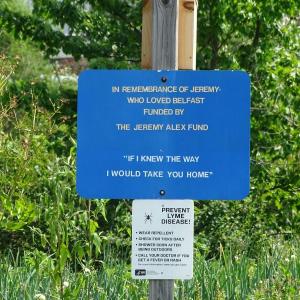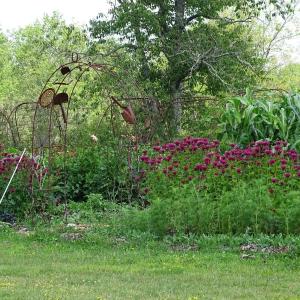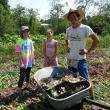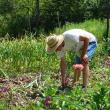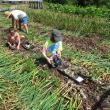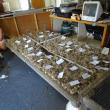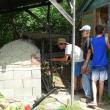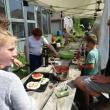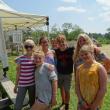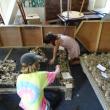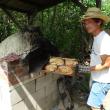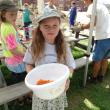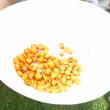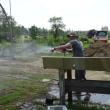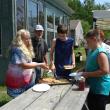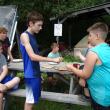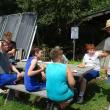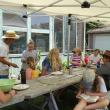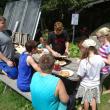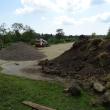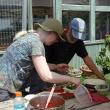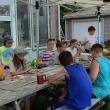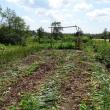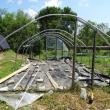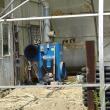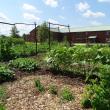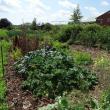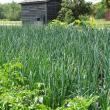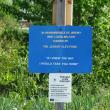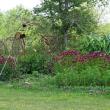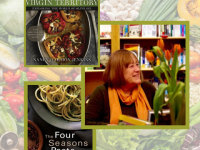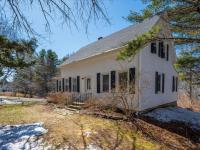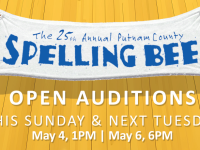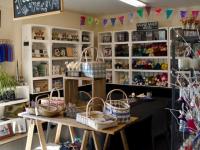Belfast middle school greenhouse gets greener thanks to industrious students, instructor
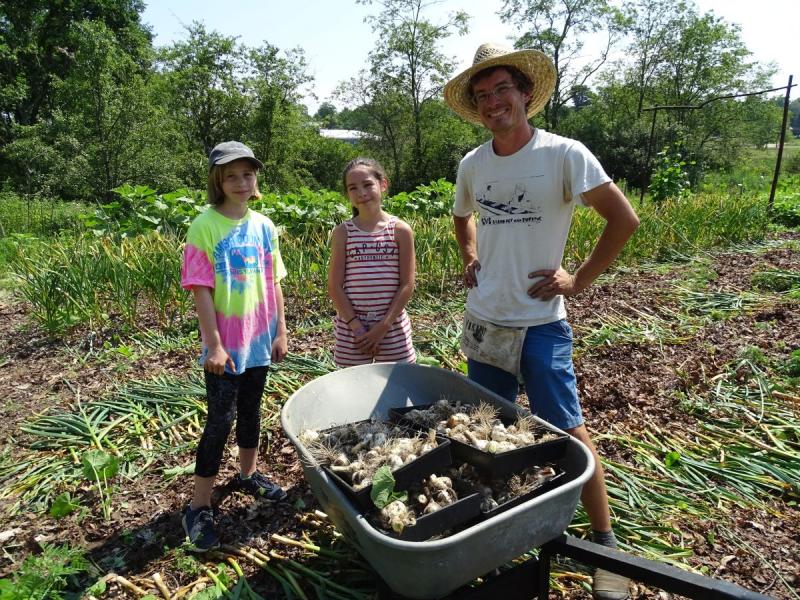 Gardening Coordinator David Wessel stands with two students and a wheelbarrow full of freshly harvested garlic. (photo by Erica Thoms)
Gardening Coordinator David Wessel stands with two students and a wheelbarrow full of freshly harvested garlic. (photo by Erica Thoms)
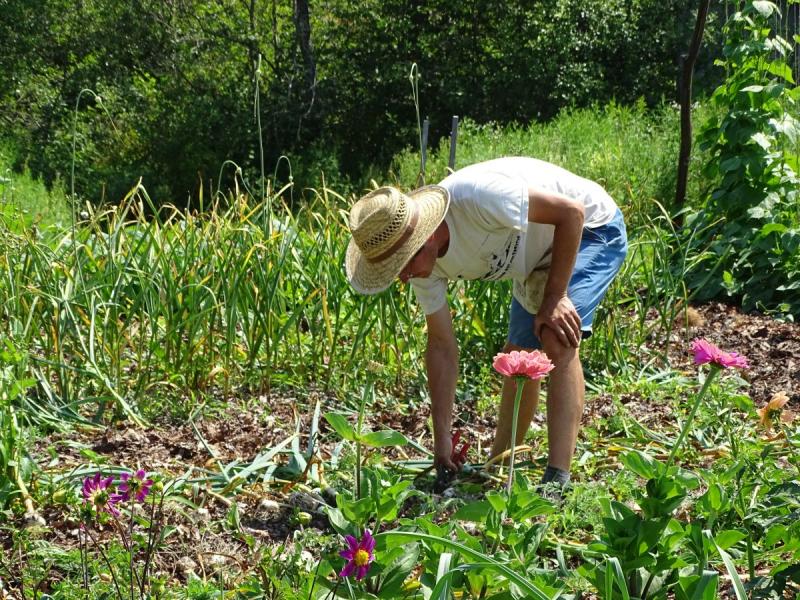 Wessel helps his students harvest their garlic. (photo by Erica Thoms)
Wessel helps his students harvest their garlic. (photo by Erica Thoms)
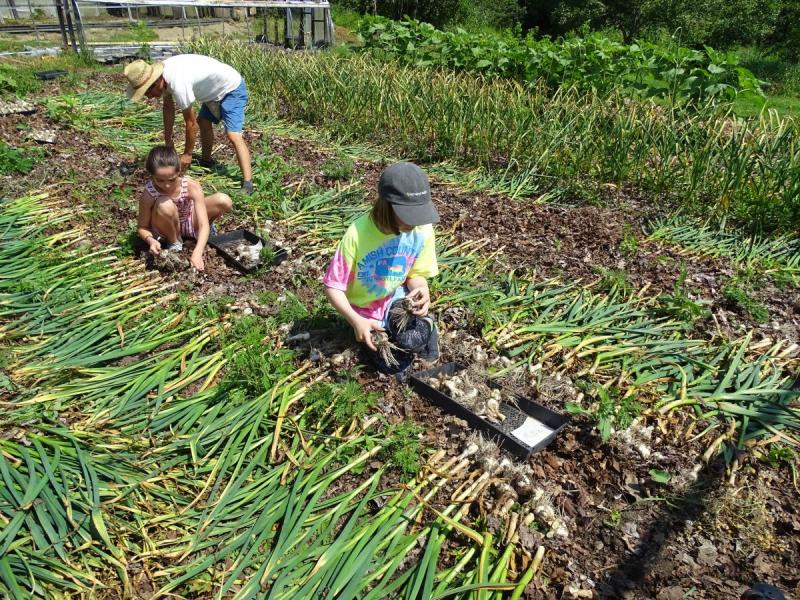 The garlic will dry for over a month and eventually sold to people, often for seed garlic, according to Wessel, who said they sell it for roughly half of what the product typically sells for. (photo by Erica Thoms)
The garlic will dry for over a month and eventually sold to people, often for seed garlic, according to Wessel, who said they sell it for roughly half of what the product typically sells for. (photo by Erica Thoms)
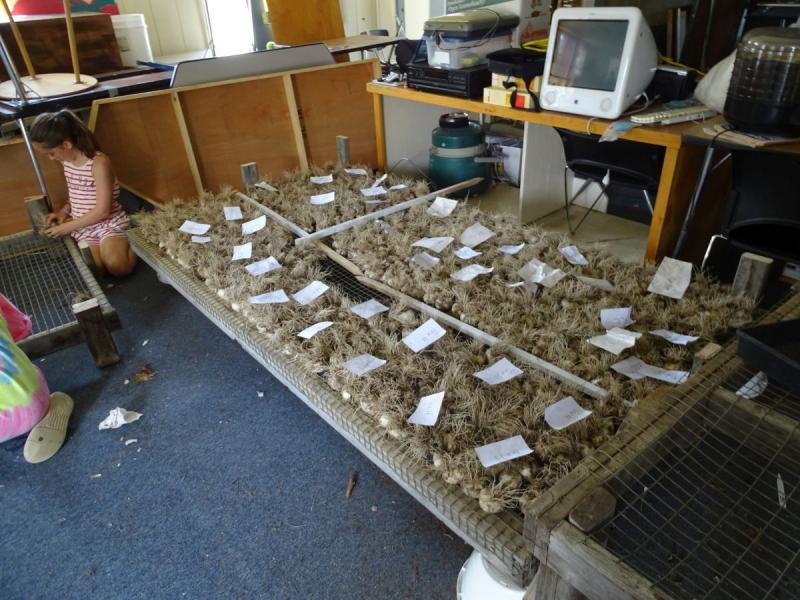 The group is using outbuildings at the school to dry their garlic since the greenhouse isn’t available. (photo by Erica Thoms)
The group is using outbuildings at the school to dry their garlic since the greenhouse isn’t available. (photo by Erica Thoms)
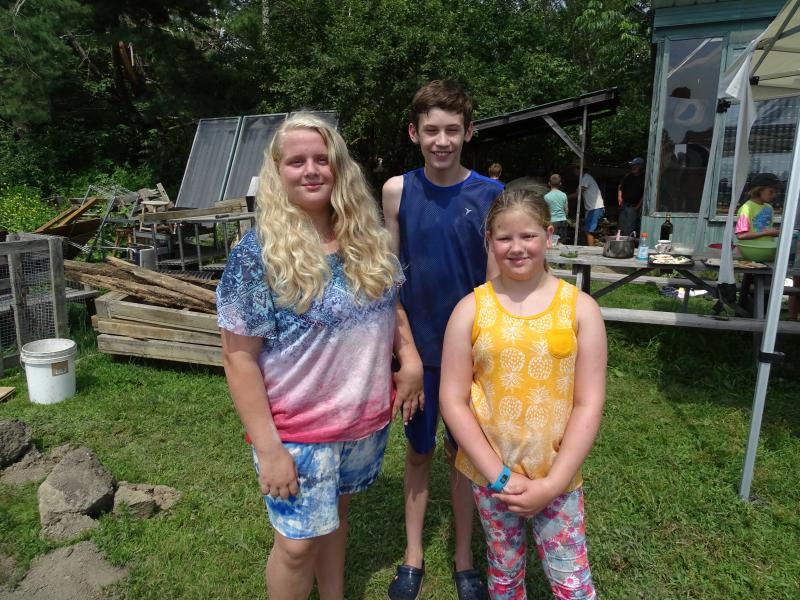 Left to right: Emma Thomas, Alec Rolfe, and Oralee. (photo by Erica Thoms)
Left to right: Emma Thomas, Alec Rolfe, and Oralee. (photo by Erica Thoms)
 Wessel checks on pizzas cooking in their cob pizza oven. (photo by Erica Thoms)
Wessel checks on pizzas cooking in their cob pizza oven. (photo by Erica Thoms)
 (photo by Erica Thoms)
(photo by Erica Thoms)
 (photo by Erica Thoms)
(photo by Erica Thoms)
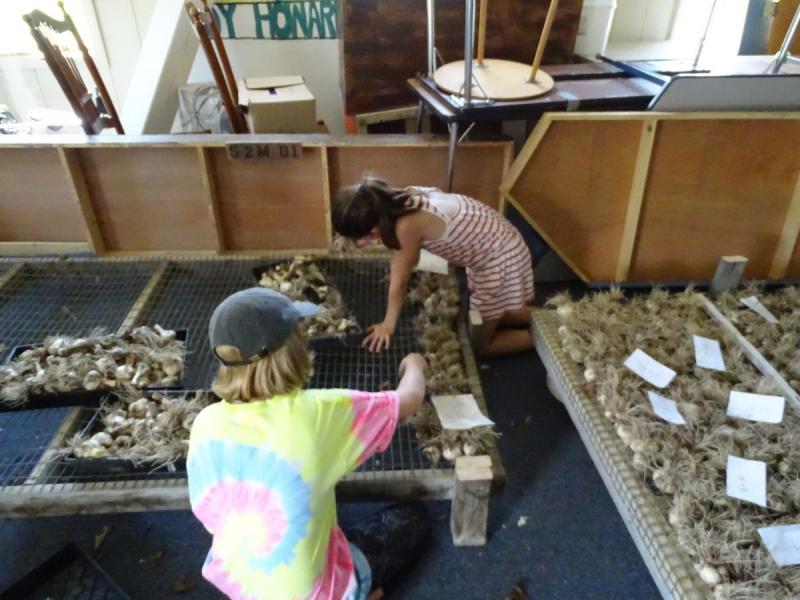 (photo by Erica Thoms)
(photo by Erica Thoms)
 (photo by Erica Thoms)
(photo by Erica Thoms)
 (photo by Erica Thoms)
(photo by Erica Thoms)
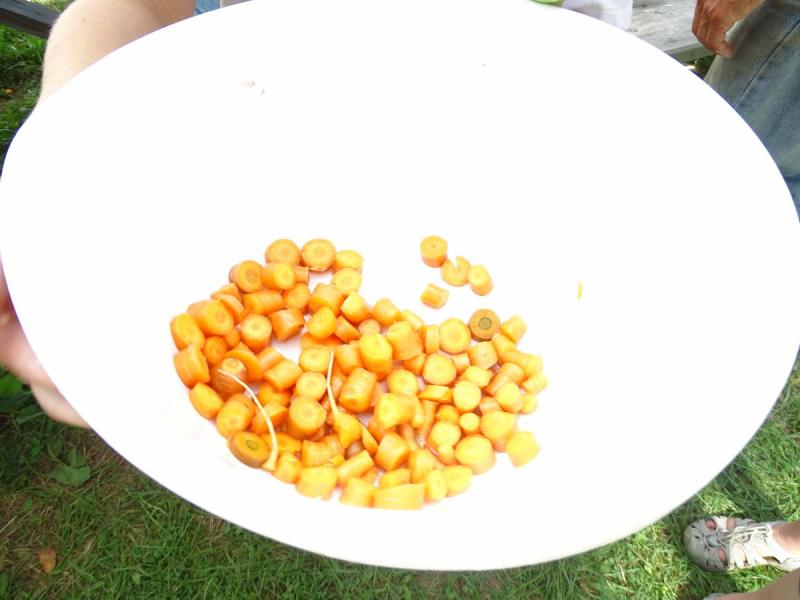 (photo by Erica Thoms)
(photo by Erica Thoms)
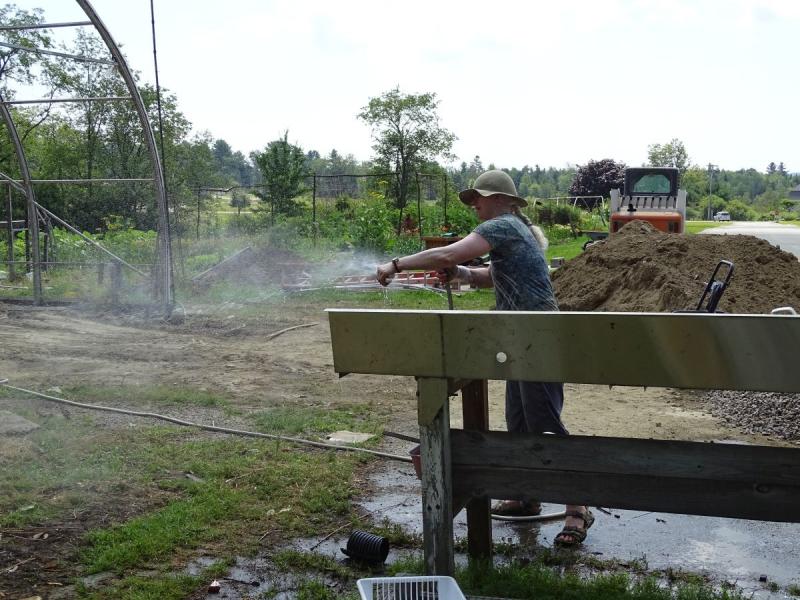 A veggie is rinsed before being added to a pizza. (photo by Erica Thoms)
A veggie is rinsed before being added to a pizza. (photo by Erica Thoms)
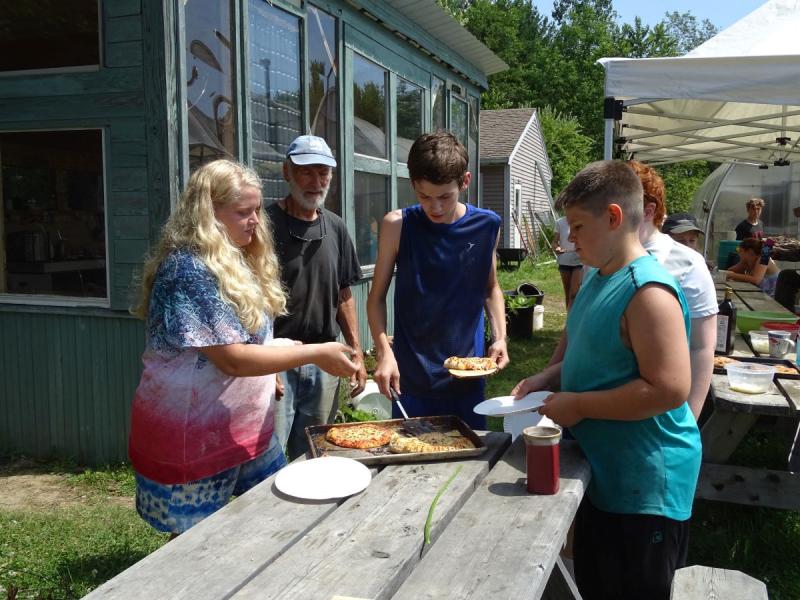 (photo by Erica Thoms)
(photo by Erica Thoms)
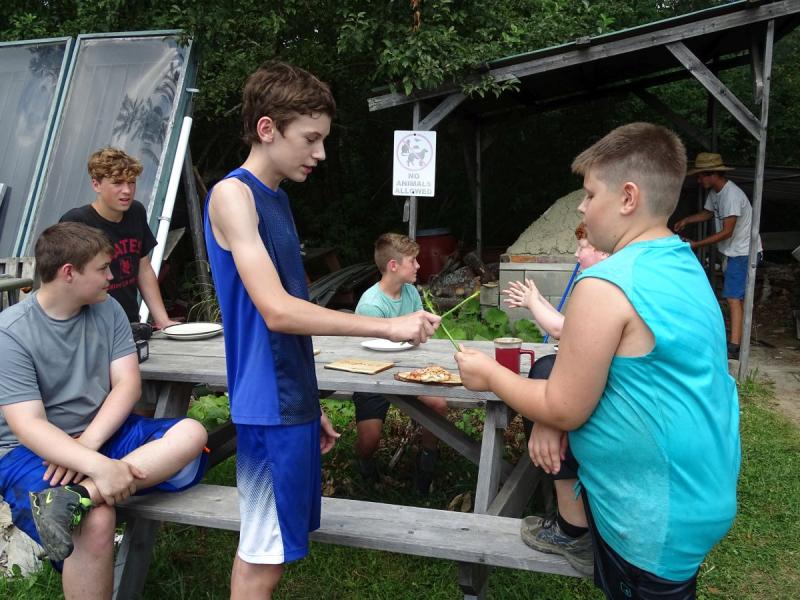 (photo by Erica Thoms)
(photo by Erica Thoms)
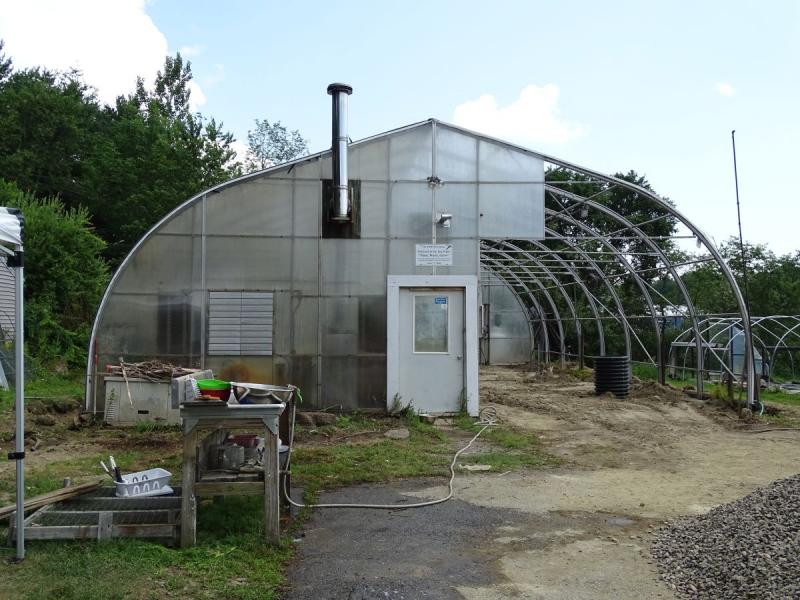 The greenhouse has been stripped of its plastic. (photo by Erica Thoms)
The greenhouse has been stripped of its plastic. (photo by Erica Thoms)
 (photo by Erica Thoms)
(photo by Erica Thoms)
 (photo by Erica Thoms)
(photo by Erica Thoms)
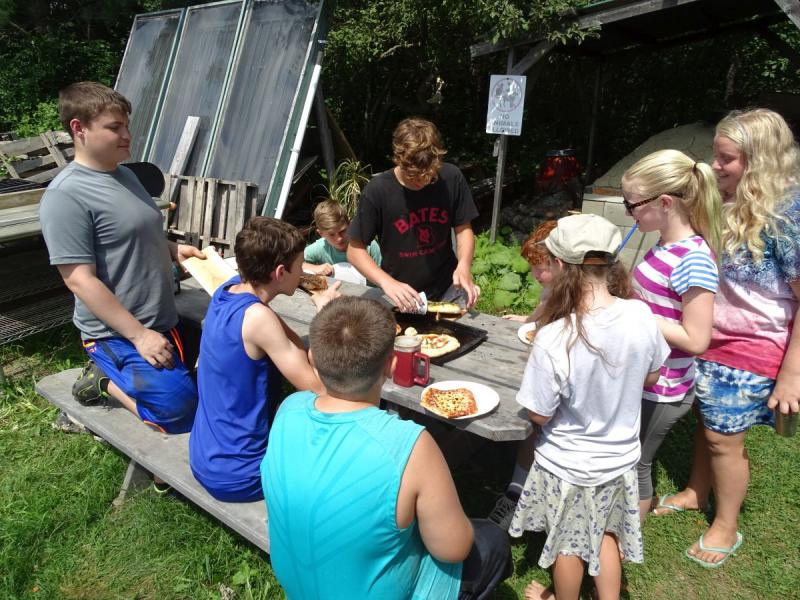 (photo by Erica Thoms)
(photo by Erica Thoms)
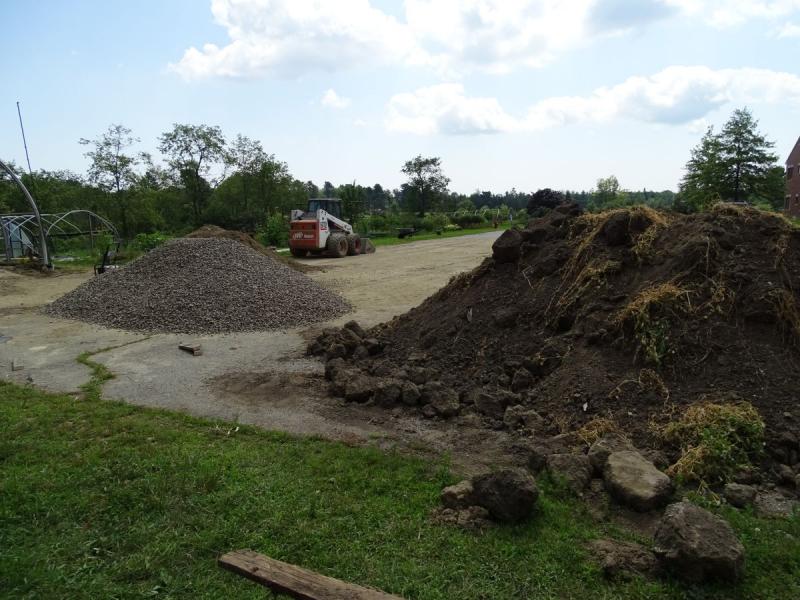 (photo by Erica Thoms)
(photo by Erica Thoms)
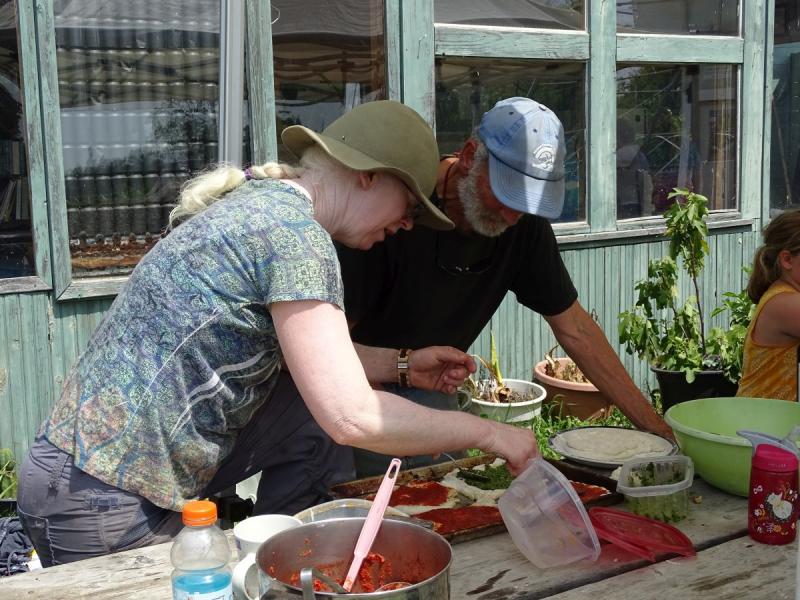 (photo by Erica Thoms)
(photo by Erica Thoms)
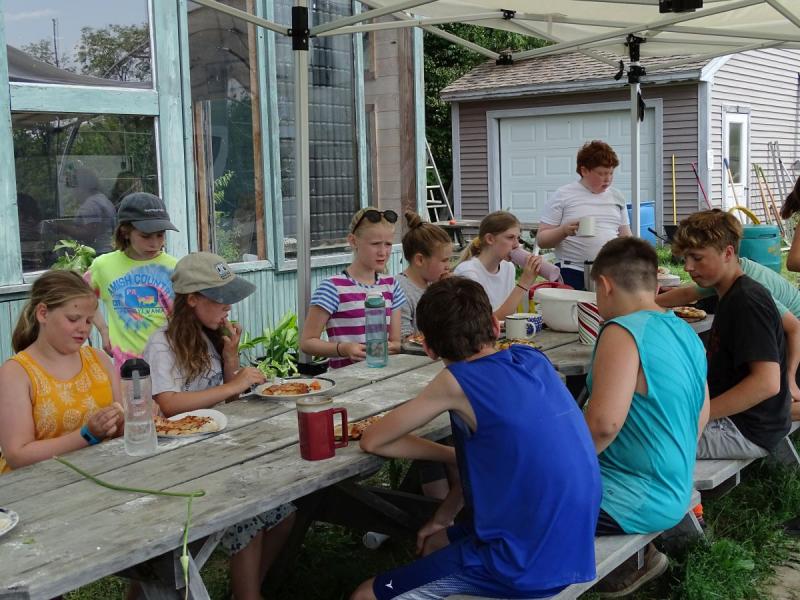 (photo by Erica Thoms)
(photo by Erica Thoms)
 (photo by Erica Thoms)
(photo by Erica Thoms)
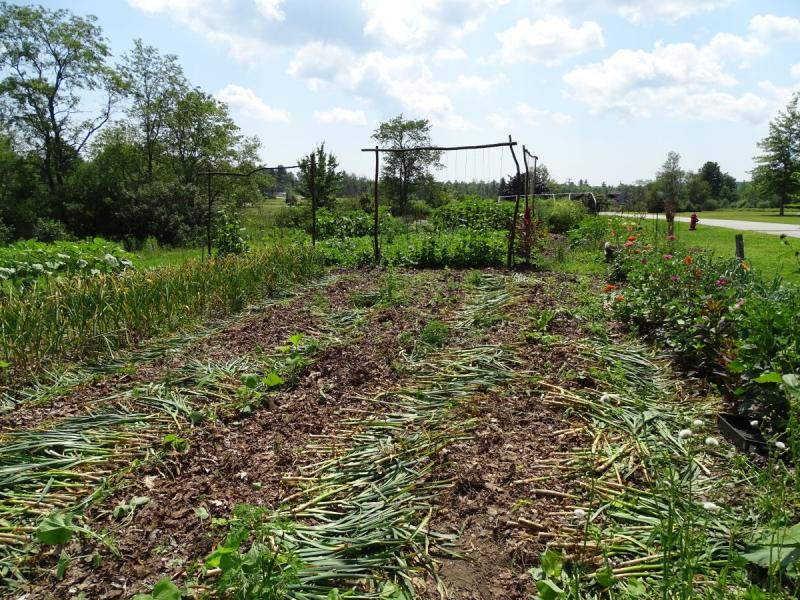 (photo by Erica Thoms)
(photo by Erica Thoms)
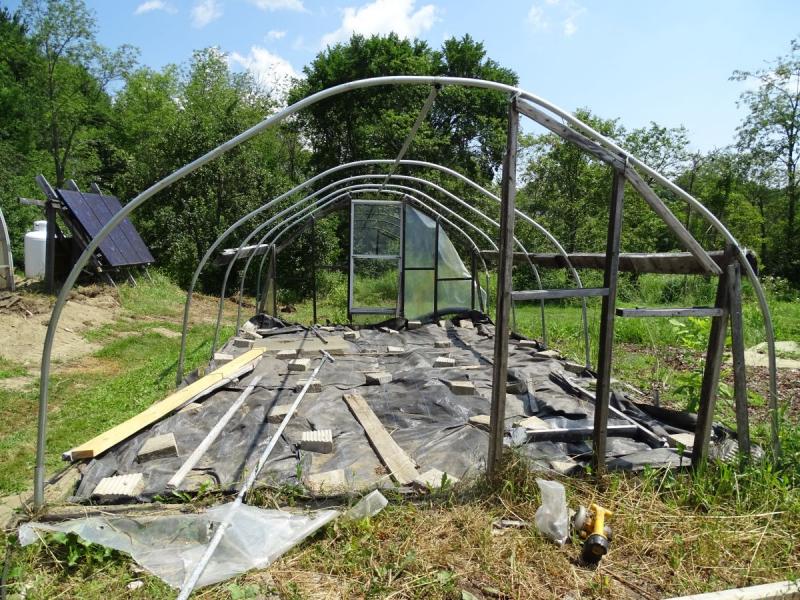 (photo by Erica Thoms)
(photo by Erica Thoms)
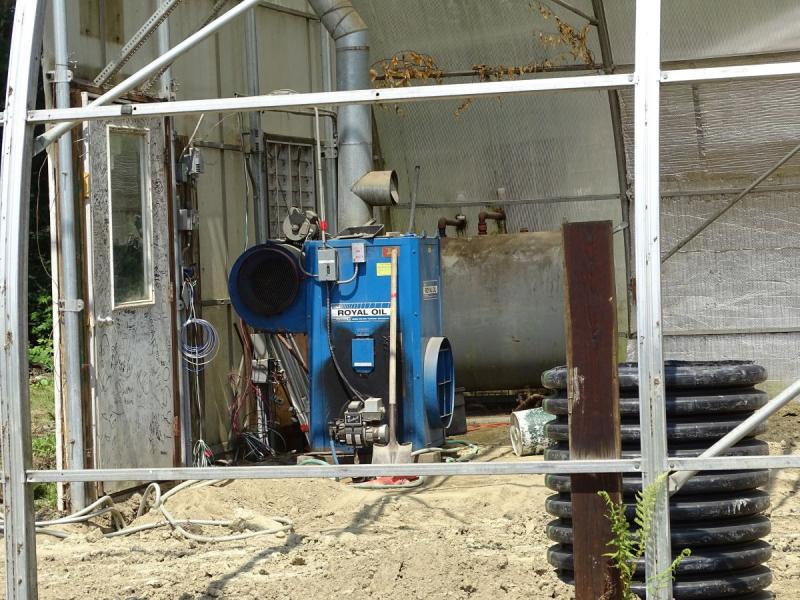 (photo by Erica Thoms)
(photo by Erica Thoms)
 (photo by Erica Thoms)
(photo by Erica Thoms)
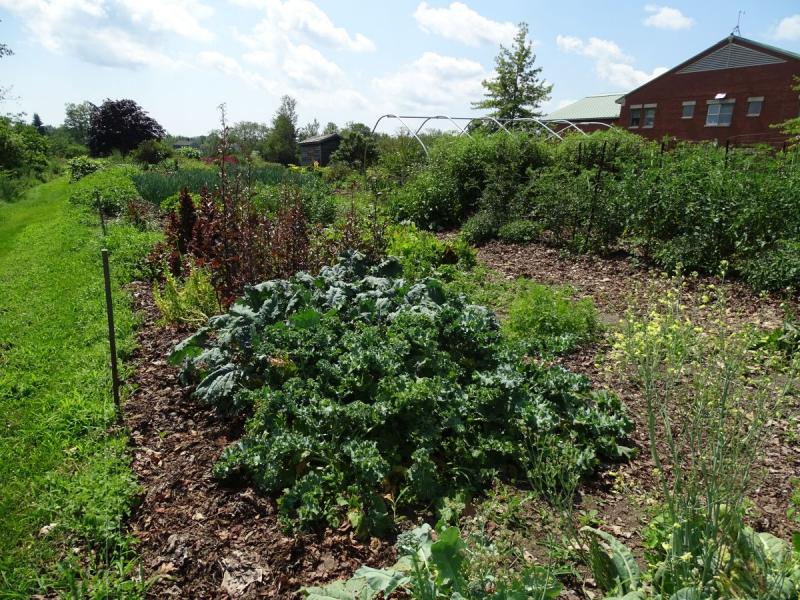 (photo by Erica Thoms)
(photo by Erica Thoms)
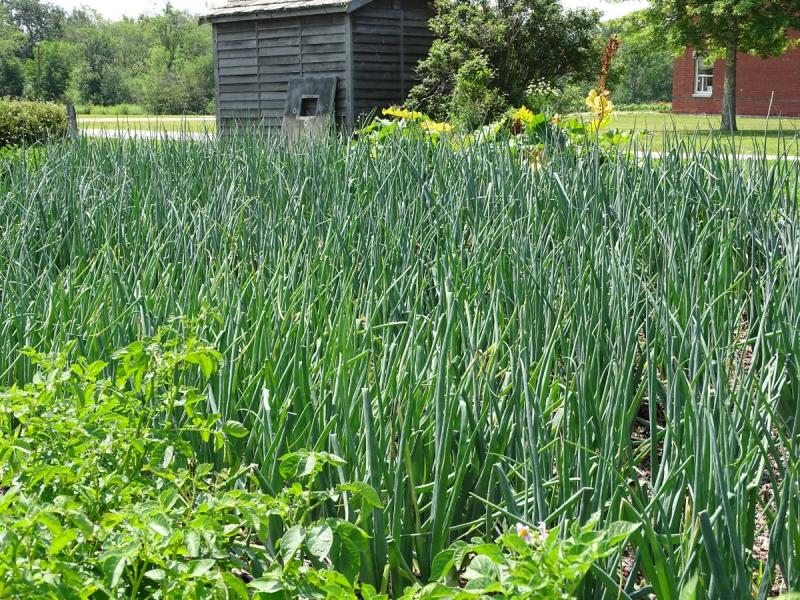 (photo by Erica Thoms)
(photo by Erica Thoms)
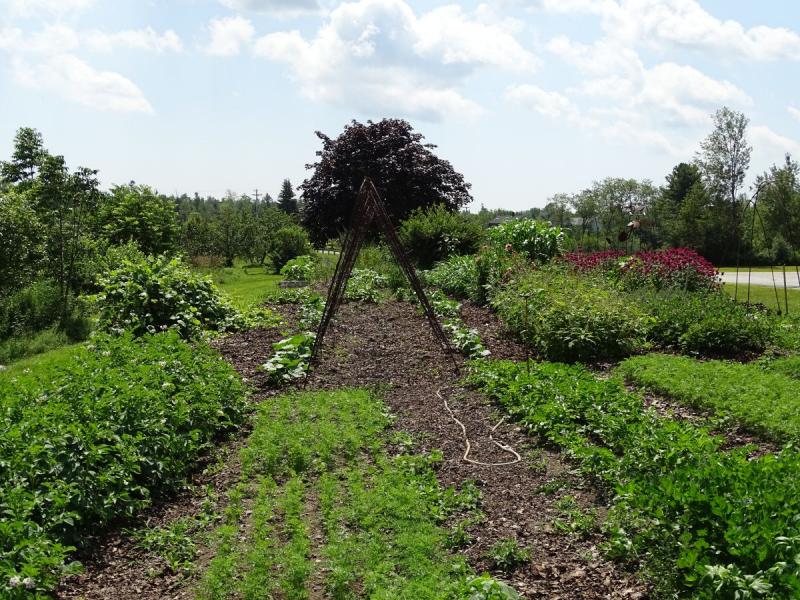 (photo by Erica Thoms)
(photo by Erica Thoms)
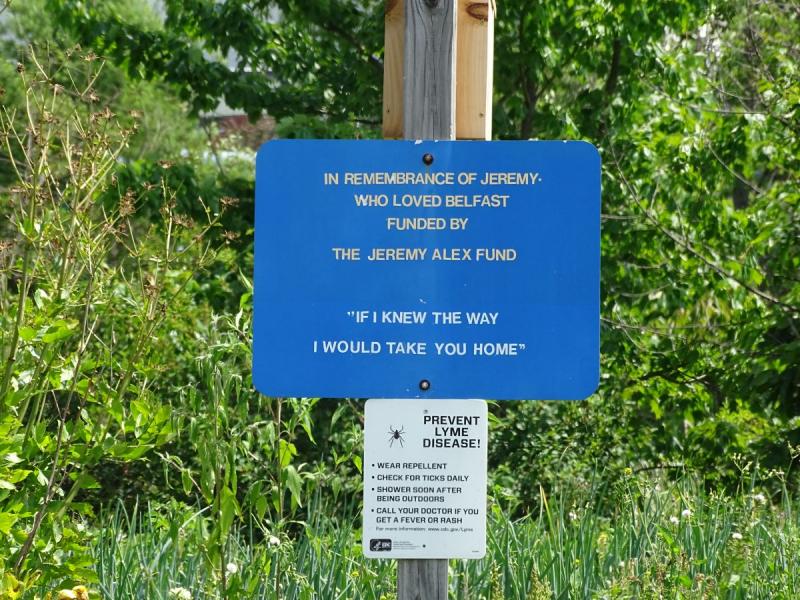 (photo by Erica Thoms)
(photo by Erica Thoms)
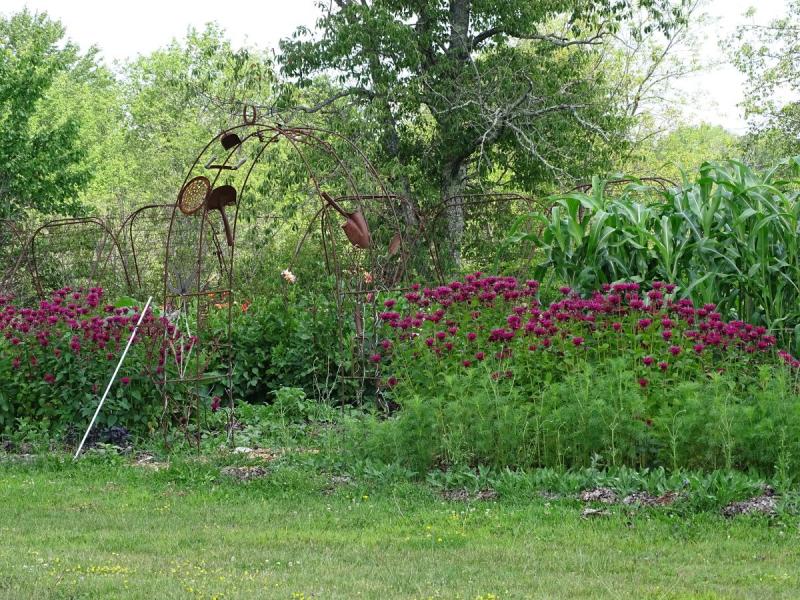 (photo by Erica Thoms)
(photo by Erica Thoms)
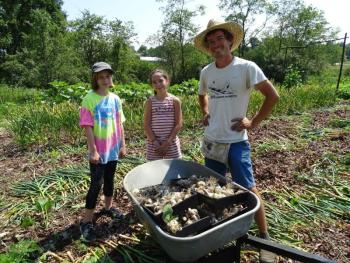 Gardening Coordinator David Wessel stands with two students and a wheelbarrow full of freshly harvested garlic. (photo by Erica Thoms)
Gardening Coordinator David Wessel stands with two students and a wheelbarrow full of freshly harvested garlic. (photo by Erica Thoms)
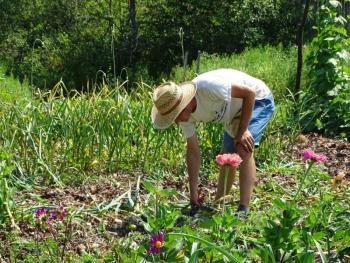 Wessel helps his students harvest their garlic. (photo by Erica Thoms)
Wessel helps his students harvest their garlic. (photo by Erica Thoms)
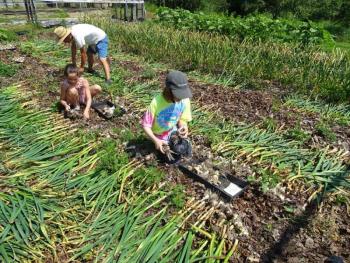 The garlic will dry for over a month and eventually sold to people, often for seed garlic, according to Wessel, who said they sell it for roughly half of what the product typically sells for. (photo by Erica Thoms)
The garlic will dry for over a month and eventually sold to people, often for seed garlic, according to Wessel, who said they sell it for roughly half of what the product typically sells for. (photo by Erica Thoms)
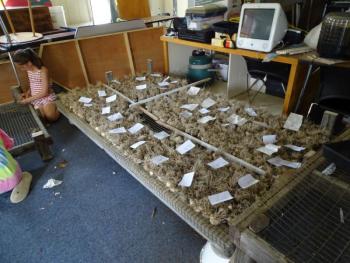 The group is using outbuildings at the school to dry their garlic since the greenhouse isn’t available. (photo by Erica Thoms)
The group is using outbuildings at the school to dry their garlic since the greenhouse isn’t available. (photo by Erica Thoms)
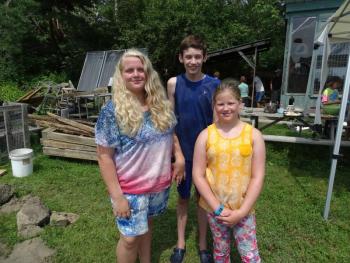 Left to right: Emma Thomas, Alec Rolfe, and Oralee. (photo by Erica Thoms)
Left to right: Emma Thomas, Alec Rolfe, and Oralee. (photo by Erica Thoms)
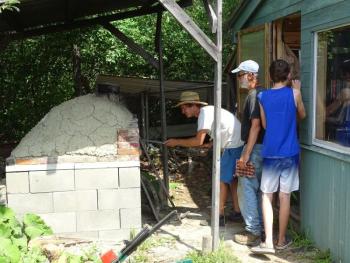 Wessel checks on pizzas cooking in their cob pizza oven. (photo by Erica Thoms)
Wessel checks on pizzas cooking in their cob pizza oven. (photo by Erica Thoms)
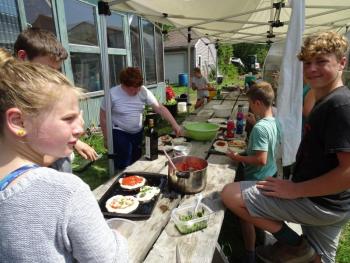 (photo by Erica Thoms)
(photo by Erica Thoms)
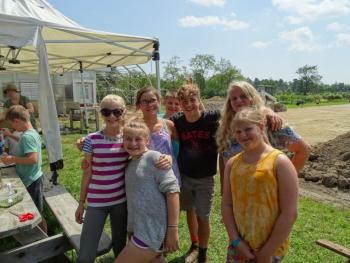 (photo by Erica Thoms)
(photo by Erica Thoms)
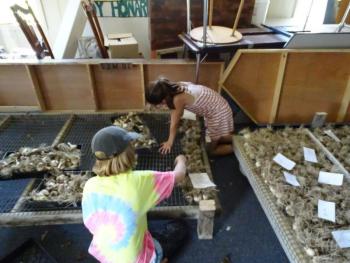 (photo by Erica Thoms)
(photo by Erica Thoms)
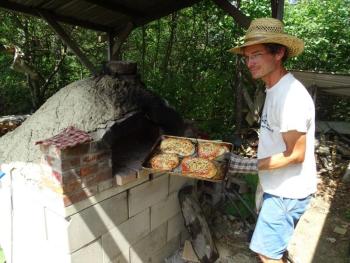 (photo by Erica Thoms)
(photo by Erica Thoms)
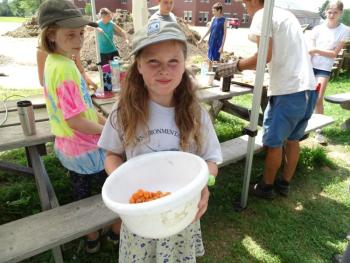 (photo by Erica Thoms)
(photo by Erica Thoms)
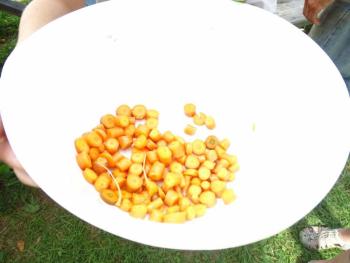 (photo by Erica Thoms)
(photo by Erica Thoms)
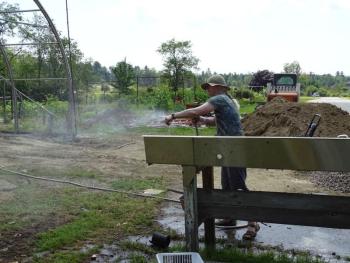 A veggie is rinsed before being added to a pizza. (photo by Erica Thoms)
A veggie is rinsed before being added to a pizza. (photo by Erica Thoms)
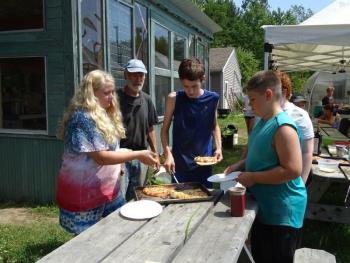 (photo by Erica Thoms)
(photo by Erica Thoms)
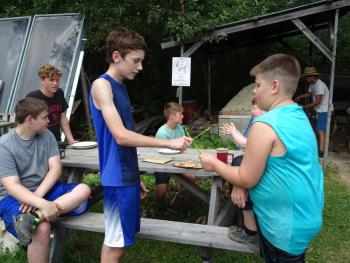 (photo by Erica Thoms)
(photo by Erica Thoms)
 The greenhouse has been stripped of its plastic. (photo by Erica Thoms)
The greenhouse has been stripped of its plastic. (photo by Erica Thoms)
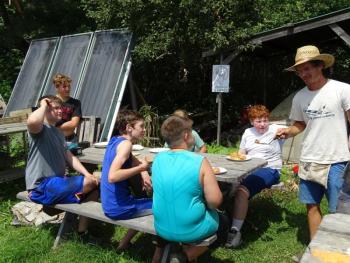 (photo by Erica Thoms)
(photo by Erica Thoms)
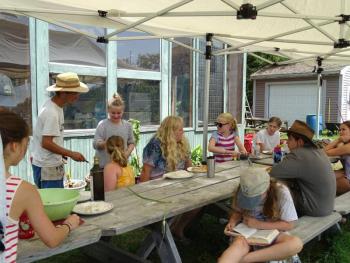 (photo by Erica Thoms)
(photo by Erica Thoms)
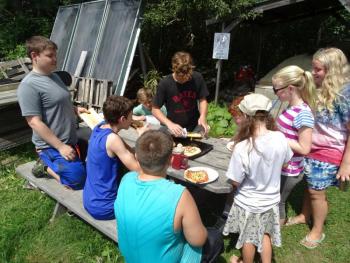 (photo by Erica Thoms)
(photo by Erica Thoms)
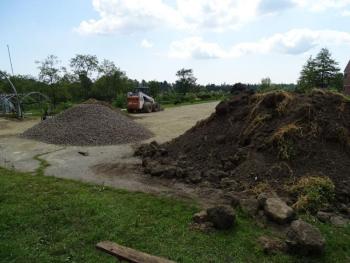 (photo by Erica Thoms)
(photo by Erica Thoms)
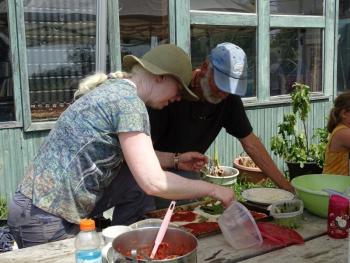 (photo by Erica Thoms)
(photo by Erica Thoms)
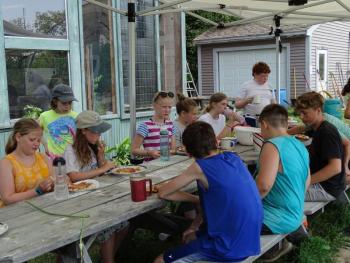 (photo by Erica Thoms)
(photo by Erica Thoms)
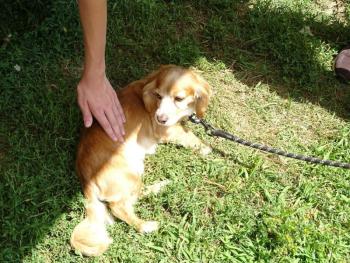 (photo by Erica Thoms)
(photo by Erica Thoms)
 (photo by Erica Thoms)
(photo by Erica Thoms)
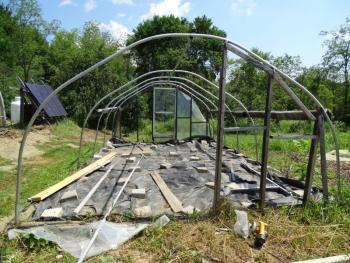 (photo by Erica Thoms)
(photo by Erica Thoms)
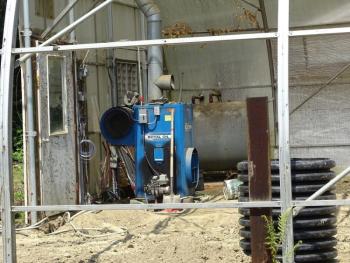 (photo by Erica Thoms)
(photo by Erica Thoms)
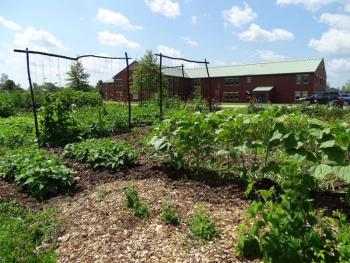 (photo by Erica Thoms)
(photo by Erica Thoms)
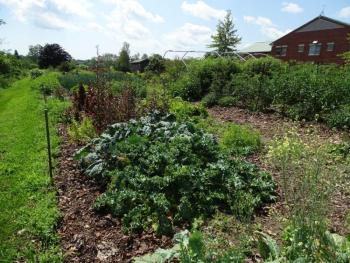 (photo by Erica Thoms)
(photo by Erica Thoms)
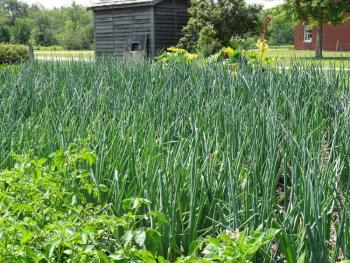 (photo by Erica Thoms)
(photo by Erica Thoms)
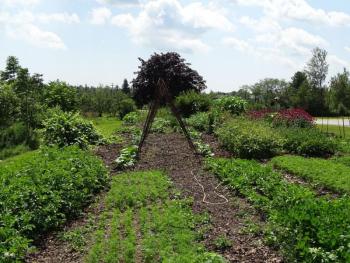 (photo by Erica Thoms)
(photo by Erica Thoms)
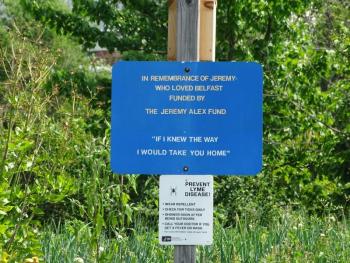 (photo by Erica Thoms)
(photo by Erica Thoms)
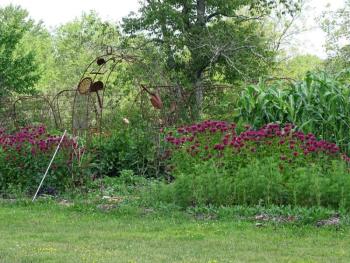 (photo by Erica Thoms)
(photo by Erica Thoms)
BELFAST — A group of industrious students and their instructor are working to make the Troy Howard Middle School greenhouse greener by shrinking its carbon footprint.
The school’s garden coordinator, David Wessel, was in the midst of a garlic harvest July 29, along with a gaggle of students ranging in age from incoming sixth graders to soon-to-be high school freshmen.
Behind the garden stands the school’s greenhouse, now stripped of its plastic, empty, and in the midst of updates that will see the energy required to heat the greenhouse in the winter drastically reduced.
Historically, the school has warmed the greenhouse by burning heating oil, with Wessel saying they justified that cost because the greenhouse allows the school to grow a lot of its own food and allows students to remain involved in gardening through the winter.
Still, Wessel said it became harder and harder to justify burning oil to grow food.
“Greenhouses are one of the most energy-intensive things in agriculture, including heating greenhouses in the north,” Wessel said.
“We’ve been trying to figure out how we could get off of fossil fuels and reduce our carbon footprint,” he said. “What we’ve settled on for starters is to build a climate battery, which is basically a network of tubes buried beneath the greenhouse. When the weather is hot, and when the sun is out, the greenhouse itself is the best producer of heat possible, because even in February it will be 95 degrees in there.”
Wessel said he has been planning the changes all winter, “but we really got into tearing it apart in mid-July. Last week we did all the excavation and did all the tubing, but you’ll only see two tubes poking out, everything else will be underground.”
About the process of creating and maintaining a greener greenhouse, Wessel said he considered how much heat a furnace, like the one being replaced, can produce, which he said is “nothing compared to what the greenhouse itself can produce.”
The problem is that the greenhouse can only produce heat when the sun is out.
“So in the winter when the night is 14 hours long, that’s when we really need the heat. The question is, can we capture some of that heat and find a way to store it for when we need it at night and in the winter?” Wessel said.
The answer, he discovered, is a climate battery, which includes one fan and two thermostats.
The climate battery stores energy when it gets hot in the greenhouse, prompting the system to push the “air down through the tubes and back into the greenhouse, so it just circulates air through the soil and all that heat gets stored in the thermal mass of that soil. We heat that soil up to 75 degrees, and then at night when it’s cold the same fan kicks on and uses the same circuit to warm the air,” he explained.
“It’s a cool system, all operated with one fan and two thermostats. It’s low-tech.”
Wessel said he got the idea from a Colorado company that has designed climate batteries like the one in the greenhouse, and eventually created a company, Ecosystem Designs, to help others create similar systems.
While the main purpose of the climate battery is to reduce the greenhouse’s carbon footprint, Wessel also hopes farmers and other schools can benefit from the modeling.
“One of our intentions is to see how well [the climate battery] works and to make our data public,” he said. “It’s going to take a couple of years to get it all running and get good data about how much heat we’re storing, but one of our big goals is to make this technology accessible for small farmers and other schools.”
Wessel said the system installation is happening in phases; this summer, the heavy machinery is completing groundwork.
“Then, when the kids get back to school, we’re going to rebuild the raised beds in the greenhouse and install two more mini climate batteries in the raised beds themselves so they’ll keep the soil in the raised beds and that will be part of their regular school day,” Wessel said.
While students get the opportunity to grow their own food, Wessel said the gardening also incorporates academics, including math, engineering, and physics.
“The garden is a classroom for them, so when they come out they’re still in class, they’re just learning in a hands-on way. Everything that can be taught inside can be taught in the garden, as well.”
One soon-to-be eighth-grader, Emma Thomas, who was on hand to assist with the garlic harvest, said she was interested in the gardening program even before she reached middle school.
“My brother and sister did it when they were in middle school and so I was interested in it, and I helped out sometimes when we picked them up,” she said.
Thomas agreed with her instructor’s assertion that other academic subjects often grow in the garden.
One incoming sixth-grader is already a participating member of the group. Oralee said she learned about the program during step-up day when future sixth graders visit the middle school, and soon-to-be freshmen visit Belfast Area High for the day.
Oralee said she has tried gardening before but has had issues.
“Every time we try my dad accidentally bulldozes it down,” she said, adding that she and her mother may try again now that she is starting in the program.
When asked what she likes best about the program so far, Oralee said “I like how you get to harvest and try new things,” before adding that she had recently tried scapes for the first time. A friend held a scape from the garden up behind Oralee to show the previously unfamiliar vegetable.
Midday, the group has lunch consisting of produce plucked from the own garden. This time, it was freshly baked pizza. Each person in attendance got to make a personal pizza with any toppings on hand.
“All the kids turn into complete food snobs because of this,” Wessel said as he took several pizzas out of a cob pizza oven, which was also built by members of the garden program.
Cob, which is made of clay, sand, straw, and water, has been used for thousands of years to build homes and other structures.
“It’s an ancient building technique; it’s basically just dirt,” Wessel said laughing. “But it works.”
Making pizza was among soon-to-be freshman Alec Rolfe’s favorite part of the program.
Rolfe said what he likes best is “probably just having fun, doing all this — making pizza, harvesting stuff, doing work, actually having stuff to do during the summer.”
“It’s really fun, you get to make pizzas or burritos, stir-fry, curry, anything like that and you get to pick your own stuff, so you may have a chance to use the oven,” said Rolfe. “You get like the basil, peas, and garlic that we have at the end of the year.”
All three students said that they would recommend participating in the garden program to incoming sixth-graders, with both Thomas and Rolfe mentioning the program is a great way to meet new friends.
“You can easily make friends here, no one is bullying each other, all of it is good fun and nice,” Rolfe said.
The program pays for itself, with funds used in the upkeep of the greenhouse coming from the profits made from garden produce. Each harvest goes to the school, with some also going to the Belfast Co-op.
Erica Thoms can be reached at news@penbaypilot.com
Event Date
Address
United States

